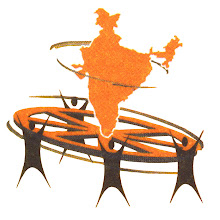(Ref: savarkar.org)
Abolition of caste
Given below is an English translation of Savarkar’s assorted views on abolition of caste
The basic aim of consolidating Hindu society
The Hindu social jurists had based social organization on the principle of distribution of duties sans competition and mutual co-operation as means to attain earthly prosperity on the path to salvation of the soul. The duties of every individual from the shudra to the Brahmin were defined to facilitate societal development. But fighting spirit (kshaatratej) is necessary to fulfill these duties properly and to protect social life. (Samagra Savarkar vangmaya, Vol. 6, p.522)
The practice of caste and consolidation of Hindu society
Firstly, it should not be forgotten that the practice of birth-based caste division must have been responsible for the mighty consolidation and amazing stability of the Hindu society under certain circumstances and conditions. While evaluating its merits and demerits, it will be sheer ingratitude to only point fingers at the latter day ill-effects of the institution of caste.
It must also be admitted that keeping the interests of the Hindu Nation at heart, the Hindus of yesteryears gave birth to or allowed birth- based caste divisions to develop spontaneously with the aim of preserving the purity of blood ties, community life and tradition. (1963, Sahaa soneri pane or Six Glorious Epochs of Indian History; Samagra Savarkar vangmaya, Vol. 4, p. 710)
Birth-based caste system as an experiment in the science of heredity
Considering its sheer magnitude, the amazing diligence and the epochal time-frame over which this inspirational experiment was played out, the human race should be certainly grateful to this great experiment played by birth-based caste system to find out the extent to which natural laws of heredity may possibly benefit the human race. Assuming that the experiment temporarily failed due to its extreme practice or distortion, it is no mean achievement to prove that such an experiment failed in such a form and under such conditions. By thus failing in this great experiment of the caste system, our Hindu race enriched human experience and has thereby succeeded in earning the gratitude of the human race; such was the scientific outlook and thought, sheer guts and amazing diligence at the root of this experiment. (1931, Jatyuchchedak nibandha or essays on abolition of caste, Samagra Savarkar vangmaya, Vol. 3, p. 457)
The meaning of ‘chaturvarnya mayaa srishtam’ (‘I have created the chaturvarnya system’)
Chaturvarnya means the four varnas (* the word varna is virtually untranslatable. It denotes the old Hindu idea of a four-tiered society with an intellectual or spiritual class called the Brahmins; the ruling, political or warrior class called the Kshatriyas; the merchant or commercial class called the Vaishyas and the servant or service-oriented class called the Shudras. They represent the four human tendencies of learning, fighting, trading and serving). These four varnas were determined by merit and actions and not by birth… ‘Chaturvarnya mayaa srishtam’ means ‘I have created the chaturvarnya system’. Nowhere in this shloka (by Sri Krishna in the Bhagwad Gita) is any there any suggestion whatsoever, that He gives birth to people on basis of merit and that this perpetuates on basis of birth in a particular family. .. The smritis clearly say, ‘janmanaa jaayate shudraha’ or ‘everyone is a shudra at birth’. It is only after imbibing samskaras that one attains the status of the twice-born (meaning Brahmin, Kshatriya, Vaishya). (1930, Jatyuchchedak nibandha or essays on abolition of caste, Samagra Savarkar vangmaya, Vol. 3, p. 444)
….The present-day caste division has arisen from the debris of the chaturvarnya of yore. (1930, Jatyuchchedak nibandha or essays on abolition of caste, Samagra Savarkar vangmaya, Vol. 3, p. 449)
I felt like rebelling against the caste system
Just as I felt I should rebel against the foreign rule over Hindusthan, I also felt that I should rebel against the caste system and untouchability in Hindusthan. (1920, Letters from the Andamans, Samagra Savarkar vangmaya, Vol. 5, p. 490)
(feedback on btjoshi87@gmail.com)
(feedback on btjoshi87@gmail.com)





No comments:
Post a Comment